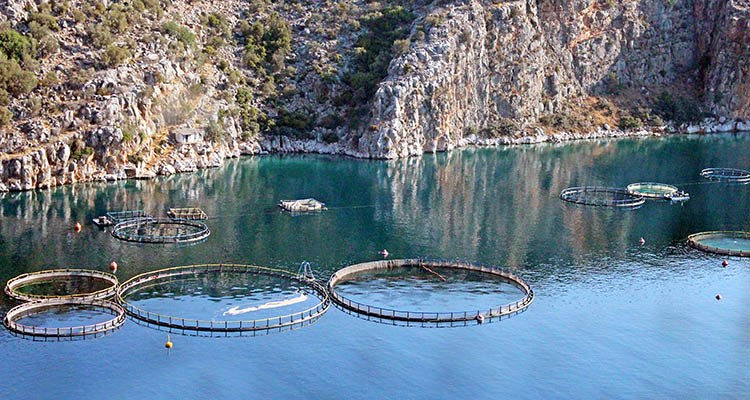Aquaculture is a broad term that refers to the breeding, rearing and harvesting of animals and plants in all types of water environments. From ponds and lakes to rivers and oceans, aquaculture is used for a variety of reasons, including food for human consumption, enhancing wild fish and plant stocks for harvest, restoring threatened aquatic species, providing fish for aquariums and rebuilding ecological habitats.
Aquaculture for Human Consumption
One of the most important purposes of aquaculture is the production of seafood for human consumption. With an ever-increasing world population, there’s a continued need for more protein and more food in general.
- Global seafood consumption reached 142 million metric tons in 2009
- According to the United Nations Food & Agriculture Organization, 27 million tons of seafood will be needed to maintain the present level of per capita consumption in 2030
- Aquaculture is a resource-efficient way to produce seafood proteins
- Worldwide, aquaculture supplies more than 50 percent of seafood produced for human consumption
- From a safety standpoint, seafood produced through aquaculture in America guarantees the strictest environmental and food safety regulations in the world
- America’s aquaculture industry meets only 5-7% of US demand for seafood
There are two primary types of aquaculture - freshwater and marine production. Freshwater aquaculture primarily produces catfish, trout and tilapia. Two-thirds of marine production includes molluscan shellfish such as oysters, clams and mussels. with the other third being fin fish.
Constructing Ponds
Proper design and construction of ponds are essential in starting a fishing farm. It’s important to consider ways to control what gets in and out, when it gets in and out, how it does this and rates in which the fish get in and out. The production site itself dictates which fish species can be produced. Check the soil to make sure it’s suitable for pond construction, as well as the water supply quality and quantity.
It’s important to choose the right type of pond liner for your aquaculture project. BTL Liners offers reinforced polyethylene (RPE) and reinforced polypropylene (RPP) liners perfect for aquaculture ponds. RPE and RPP liners are certified for potable drinking water for human consumption and a plant and fish safe. Additionally, these types of liners are lightweight and have excellent UV resistance when exposed to sunlight. Pond liners from BTL can be custom ordered in any dimensions.
Contact BTL Liners for more information about aquaculture and how RPE and RPP pond liners can be used for the success of your fish farming operations.



